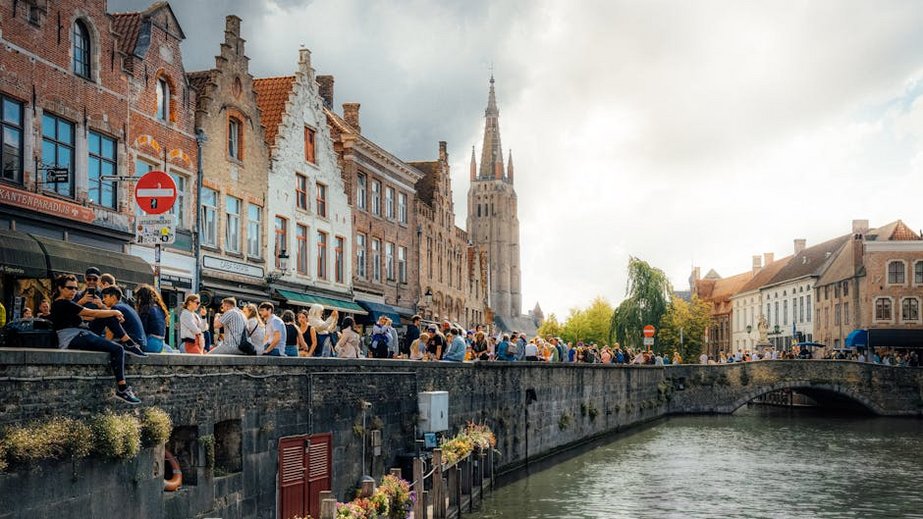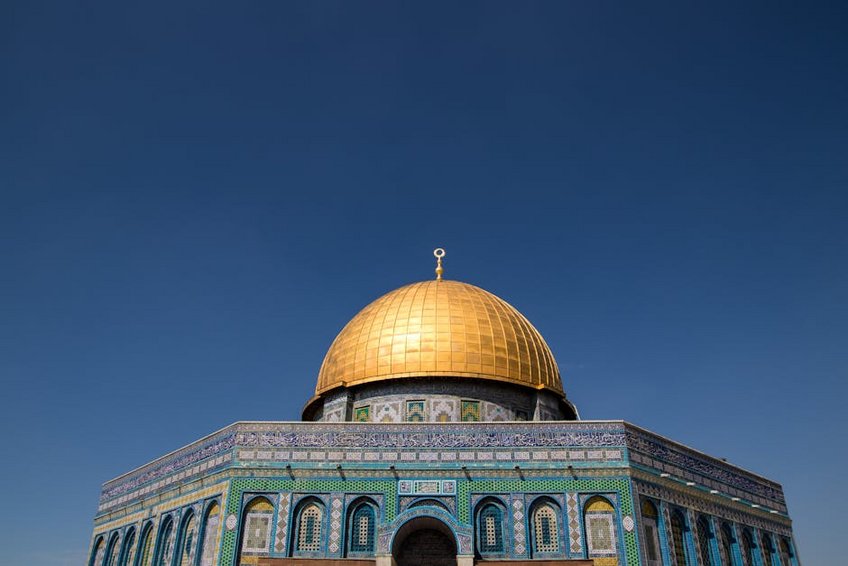Palestine Jericho Ancient City: Exploring the World’s Oldest Continuous Settlement
Stepping into Palestine Jericho Ancient City feels like opening a living history book where every stone whispers stories from ten thousand years of human civilization. As the lowest city on Earth and one of humanity’s oldest continuously inhabited settlements, this remarkable destination offers an unparalleled journey through layers of Canaanite, Israelite, Roman, and Islamic heritage. You’ll discover archaeological treasures that predate the Egyptian pyramids by thousands of years while experiencing the warm hospitality of modern Palestinian culture. The Palestine Jericho Ancient City experience combines breathtaking desert landscapes with profound historical significance, creating memories that will linger long after your visit. From the ancient walls that famously fell to Joshua’s trumpets to the lush oasis that has sustained life for millennia, every corner reveals why this destination captivates historians, pilgrims, and adventure seekers alike. Prepare to walk where prophets and kings once trod while creating your own unforgettable stories in this crossroads of civilization.
Palestine Jericho Ancient City – Essential Historical Foundation
Understanding the deep historical context of Palestine Jericho Ancient City transforms your visit from a simple tourist excursion into a profound cultural pilgrimage. Archaeological evidence confirms human settlement here dates back to 9000 BCE, making it arguably the world’s oldest city with continuous habitation. The city’s strategic location near freshwater springs in the Jordan Valley created an oasis that attracted successive civilizations, each leaving their distinctive mark on the landscape and culture. You’ll encounter remnants from the Pre-Pottery Neolithic period through Bronze Age fortifications, Roman villas, and Umayyad palaces, all within walking distance of each other. This layered history means every visit reveals new insights, whether you’re examining ancient irrigation systems or standing where biblical events reportedly unfolded. The Palestine Jericho Ancient City experience connects you directly to humanity’s earliest urban experiments while showcasing how ancient innovations in agriculture and architecture shaped our modern world.
Historical Timeline and Significance – What Every Visitor Should Know
- Neolithic Revolution (9000-7000 BCE): Discover the world’s earliest known protective wall and stone tower at Tell es-Sultan, showcasing humanity’s first urban planning efforts that predate Mesopotamia’s cities by millennia.
- Bronze Age Canaanite City (3000-1500 BCE): Explore remains of sophisticated water management systems and fortified structures that made Jericho a regional power center long before the Israelite conquest narratives.
- Roman and Byzantine Periods (63 BCE-636 CE): Experience the winter palace complex built by Herod the Great and early Christian pilgrimage sites that attracted believers from across the empire.
- Islamic Heritage (636 CE-Present): Appreciate the beautifully preserved Hisham’s Palace with its stunning mosaics and the ongoing Palestinian cultural traditions that animate the modern city.
- Budget travelers can manage on $40-60 USD daily using shared taxis, street food, and hostel accommodation while still accessing major archaeological sites and cultural experiences.
- Mid-range visitors spending $80-120 USD daily enjoy private transportation, comfortable hotels, restaurant meals, and guided tours of key historical locations with expert explanations.
- Luxury experiences at $150-300+ USD daily include resort accommodations with Dead Sea access, private archaeological guides, fine dining, and customized itineraries with special site access permissions.
- Palestine Ministry of Tourism and Antiquities
- Lonely Planet Jericho Travel Guide
Key Archaeological Sites – Must-Visit Historical Locations
Your exploration of Palestine Jericho Ancient City should prioritize several extraordinary archaeological sites that bring different historical periods to life. Tell es-Sultan, the original settlement mound, reveals occupation layers spanning 10,000 years where you can literally walk through millennia of human history. The adjacent Spring of Elisha provides living context to biblical stories while demonstrating ancient engineering brilliance. Hisham’s Palace showcases Islamic Umayyad architecture with its breathtaking tree-of-life mosaic that rivals any ancient artwork globally. Each site offers unique perspectives on how civilizations adapted to this challenging environment while creating enduring cultural landmarks. You’ll want to allocate sufficient time at each location to fully appreciate the scale of human achievement represented in Palestine Jericho Ancient City’s archaeological treasures.
Palestine Jericho Ancient City – Comprehensive Trip Planning
Planning your visit to Palestine Jericho Ancient City requires careful consideration of seasonal patterns, logistical arrangements, and cultural sensitivities to ensure a smooth and enriching experience. The city’s location 258 meters below sea level creates a unique microclimate with hot, dry summers and mild, pleasant winters that influence everything from packing choices to daily itinerary planning. You’ll need to coordinate transportation through the complex political landscape of the West Bank while arranging necessary permits and guides for certain archaeological sites. Budget-conscious travelers will find Palestine Jericho Ancient City surprisingly affordable compared to other Middle Eastern destinations, with opportunities to stretch dollars through local homestays and street food. Luxury seekers can indulge in upscale resorts with Dead Sea access and private guided tours of restricted archaeological areas. Regardless of your travel style, advance preparation ensures you maximize your time exploring this extraordinary destination.
Best Time to Visit Palestine Jericho Ancient City
The ideal visiting period for Palestine Jericho Ancient City falls between October and April when temperatures range from 15-25°C (59-77°F), creating perfect conditions for extensive outdoor exploration. Winter months (December-February) offer crisp, sunny days ideal for hiking and archaeological site visits, though occasional rainfall can make some areas muddy. Spring (March-April) brings spectacular wildflower blooms across the Jordan Valley landscape, while autumn (October-November) provides comfortable temperatures before the holiday crowds arrive. Summer months (May-September) see extreme heat often exceeding 40°C (104°F), making early morning and late afternoon visits essential for comfort. Consider aligning your trip with cultural events like the Jericho Winter Festival in January or avoiding major religious holidays when sites become crowded with pilgrim groups.
Budget Planning and Costs for Your Journey
Essential Preparation Checklist – Before You Go
Thorough preparation significantly enhances your Palestine Jericho Ancient City experience, beginning with verifying current entry requirements for the West Bank through official consular sources. Ensure your passport has sufficient validity and research whether your nationality requires special permits beyond standard Israeli tourist visas. Pack lightweight, modest clothing suitable for conservative local norms and religious sites, plus sturdy walking shoes for archaeological exploration. Download offline maps and translation apps since English availability varies, and arrange comprehensive travel insurance covering potential political disruptions. Familiarize yourself with basic Arabic greetings and cultural customs to facilitate positive interactions with local communities. Finally, confirm transportation options from Jerusalem or Amman and book reputable local guides in advance for a seamless arrival experience.

Palestine Jericho Ancient City – Unforgettable Attractions and Activities
Your days exploring Palestine Jericho Ancient City will fill with extraordinary experiences that blend ancient wonders with vibrant modern culture, creating lasting memories across diverse interests. The archaeological sites alone could occupy multiple days, from the foundational layers at Tell es-Sultan to the breathtaking Umayyad mosaics at Hisham’s Palace that showcase early Islamic artistic brilliance. Beyond history, you can float in the hyper-buoyant Dead Sea waters just minutes from the city center or ride cable cars to the Mount of Temptation monastery with panoramic Jordan Valley views. The lush date palm groves and agricultural fields demonstrate why this oasis remained continuously inhabited for millennia, while modern restaurants serving traditional Palestinian cuisine provide delicious cultural immersion. Every activity in Palestine Jericho Ancient City connects you to both ancient civilizations and living traditions, ensuring your visit feels both educational and authentically engaging.
Must-See Highlights – Iconic Sites You Can’t Miss
No visit to Palestine Jericho Ancient City is complete without exploring its crown jewel archaeological sites that reveal the full scope of human history concentrated in this small area. Tell es-Sultan, the original settlement mound, displays excavated remains of the world’s earliest known protective wall and stone tower dating back 10,000 years—structures that revolutionized urban development globally. Just northwest lies Hisham’s Palace with its magnificent mosaic floors including the famous “Tree of Life” that has become an iconic symbol of Palestinian heritage. The nearby Mount of Temptation features a Greek Orthodox monastery clinging dramatically to cliffside caves where Jesus reportedly fasted for forty days, accessible by cable car with breathtaking valley views. Each highlight offers unique perspectives on why Palestine Jericho Ancient City maintained its significance across countless generations and civilizations.
Hidden Gems and Local Favorites – Beyond the Guidebooks
Venturing beyond the main tourist trail in Palestine Jericho Ancient City rewards you with authentic experiences that few visitors discover, deepening your connection to this living historical landscape. The vibrant local market (souq) near the city center bursts with colorful seasonal produce, traditional crafts, and the opportunity to interact with Palestinian merchants practicing trades passed through generations. Seek out the lesser-visited Nabi Musa shrine believed to contain Prophet Moses’ tomb, where local pilgrims create a spiritually charged atmosphere, especially on Friday mornings. For nature enthusiasts, the Wadi Qelt canyon offers spectacular hiking through desert landscapes to St. George’s Monastery, with occasional wild ibex sightings and seasonal waterfall flows. These hidden gems within Palestine Jericho Ancient City provide intimate cultural encounters that complement the major archaeological sites perfectly.
Palestine Jericho Ancient City – Practical Travel Essentials
Navigating the practical aspects of visiting Palestine Jericho Ancient City requires understanding the unique political and geographical context of the West Bank while planning comfortable accommodation and transportation options. The city sits in Area A under Palestinian Authority control, necessitating arranged transportation rather than independent rental car travel for most international visitors. You’ll find accommodation ranging from basic hostels to luxury resorts with Dead Sea access, though booking in advance is essential during peak pilgrimage seasons. Currency exchange facilities are limited, so carrying sufficient Israeli shekels or USD cash proves practical since credit card acceptance remains inconsistent. Communication challenges vary from excellent English at major hotels to minimal foreign language knowledge in local markets, making basic Arabic phrases and translation apps valuable tools. Despite these considerations, Palestine Jericho Ancient City welcomes visitors with remarkable hospitality once logistical details are properly arranged.
| Accommodation Category | Features and Amenities | Price Range (Nightly USD) |
|---|---|---|
| Budget Hostels | Shared facilities, basic rooms, central locations near markets | $15-30 |
| Mid-Range Hotels | Private bathrooms, air conditioning, breakfast included, swimming pools | $50-100 |
| Luxury Resorts | Dead Sea access, spa facilities, multiple restaurants, guided tours | $120-250+ |


